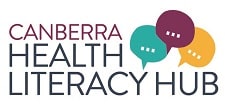Accreditation and Safety Standards
Accreditation and Safety Standards
Health Literacy Action and Accreditation
Key health service quality frameworks, including the National Quality and Safety Health Service (NQSHS) Standards and the Royal Australian College of General Practitioner’s Standards for General Practice, require action to address health literacy.
National Quality and Safety Standards
NQSHS accredited health services must demonstrate that they “communicate with patients in a way that supports effective partnerships”. Standard 2, Partnering with Consumers, includes three Standards that are directly relevant to health literacy. These are:
Standard 2.8: The health service organisation uses communication mechanisms that are tailored to the diversity of the consumers who use its services and, where relevant, the diversity of the local community.
Standard 2.9: Where information for patients, consumers, carers, families and consumers about health and health services is developed internally, the organisation involves consumer sin its development and review
Standard 2.10: The health service organisation supports clinicians to communicate with patients, carers, families and consumers about health and health care so that:
- Information is provided in a way that meets the needs of patients, carers, families and consumers
- Information is easy to understand and use
- The clinical needs of patients are addressed while they are in the health service organisation and
- Information needs for ongoing care are provided on discharge.[i]
The ACSQHC has more guidance on health literacy in the Standards on this page and this presentation.
Professional Standards
Professional standards and codes of conduct for health professionals vary in terms of how directly they address health literacy. For example, the Code of Conduct for Medical Practitioners does not include the term ‘health literacy’, but its Standard 3, Working with Patients, recognises the importance of doctor-patient partnerships based on respect, openness, trust and good communication (3.2).
The RACGP’s Standards for General Practice Criterion C1.3, Informed Patient Decisions, includes a statement that health literacy is important to shared decision-making and informed patient decision-making. This standard encourages general practitioners to consider the health literacy level of their patients, and tailor their information and communication accordingly. It also suggests action that general practitioners could take, for example, using flipcharts and diagrams to explain health concepts and processes to patients [ii]. The RACGP Standards for General Practice (5th Edition) have been mapped against organisational health literacy dimensions within the HeLLO Tas! Toolkit. This toolkit will help you see what you are already doing well and what else you might do to further enhance your practice. It can help support your evidence towards meeting quality accreditation standards relating to outcomes for clients, consumer rights, evidence-based practice, and community development.
The Code of Conduct for Surgeons doesn’t mention health literacy but does commit surgeons to using interpreters where required by people of culturally and linguistically diverse backgrounds.
The Standards for Registered Nurses do not mention health literacy explicitly but include the following closely associated competencies:
- Standard 2.4: Provides support and directs people to resources to optimise health related decisions, and
- Standard 3.2: Provides the information and education required to enhance people’s control over health.[iii]
Other standards do use the term ‘health literacy’ to articulate key professional competencies. For example, the Standards for Nurse Practitioners commit nurse practitioners to “contribute… to health literacy by sharing knowledge with the person receiving care to achieve evidence-informed management plan”.
The Professional Practice Standards for Pharmacists includes a focus on health literacy in the context of medicines information. Standard 6 commits pharmacists to:
“develop resources and skills to provide services and education consistent with health literacy principles and empower patients by providing appropriate information and resources so that they can actively participate to achieve their own healthcare goals.”
This Standard also requires pharmacists to respond to the digital literacy needs of patients and the community.
Resources:
Health Literacy Northern NSW has mapped the 10 Attributes of a Health Literate Organisation against the The National Safety and Quality Health Service Standards and the Royal Australian College of General Physicians Standards for General Practices. You can find this information in their Health Literacy Handbook.
References:
[i] Australian Commission on Safety and Quality in Health Care. 2017. National Quality and Safety Health Service (NQSHS) Standards. Accessed 19/06/2019 at: <https://www.safetyandquality.gov.au/standards/nsqhs-standards>
[ii] RACGP Standards for General Practice 5th edition. Accessed 19/06/2019 at: <https://www.racgp.org.au/running-a-practice/practice-standards/standards-5th-edition/standards-for-general-practices-5th-ed>
[iii] Registered nurses standard for practice, Nursing and Midwifery Board of Australia 1 June 2016
Last Updated on 22 October, 2025.
